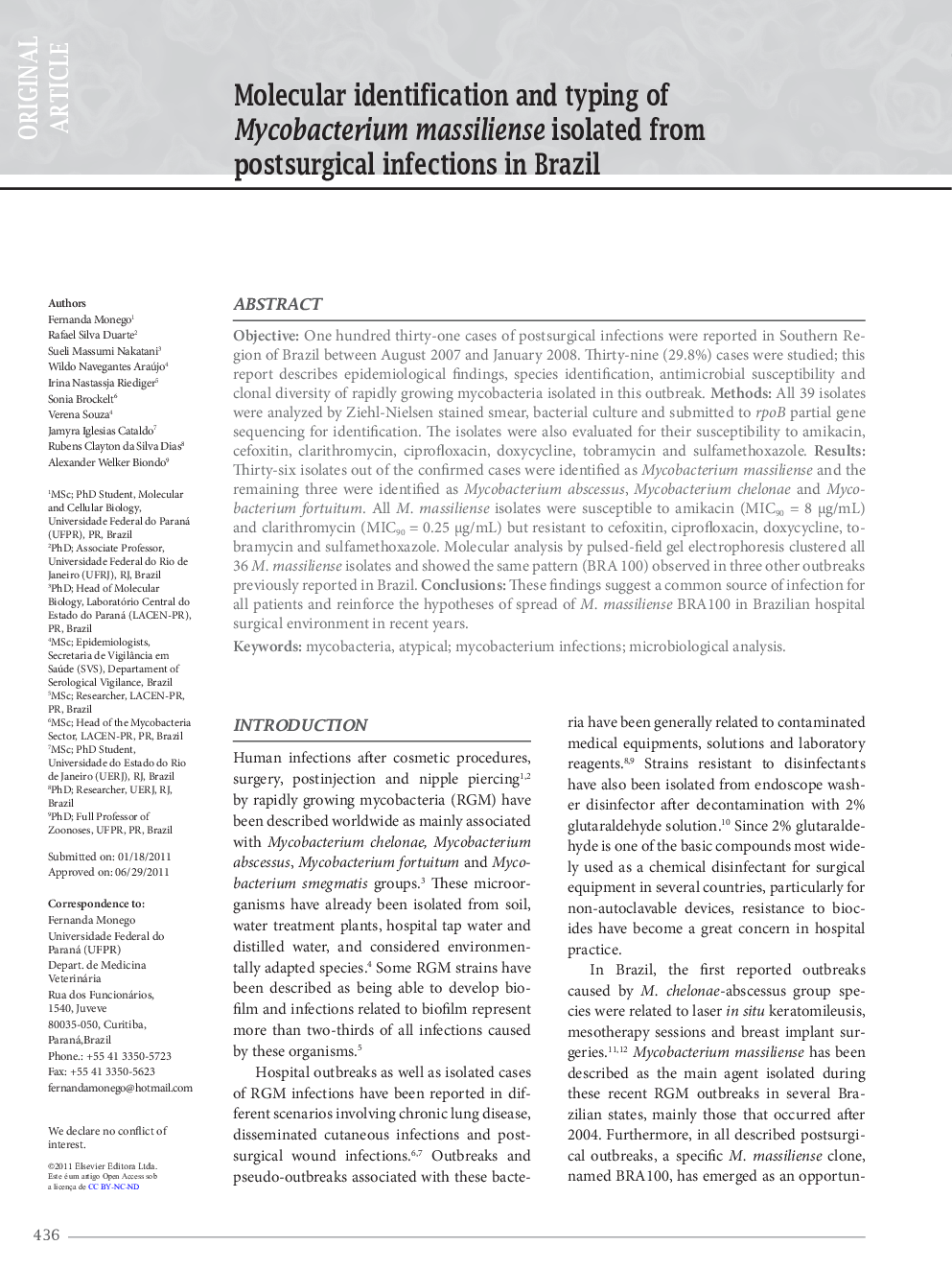| کد مقاله | کد نشریه | سال انتشار | مقاله انگلیسی | نسخه تمام متن |
|---|---|---|---|---|
| 3344536 | 1591212 | 2011 | 6 صفحه PDF | دانلود رایگان |

ObjectiveOne hundred thirty-one cases of postsurgical infections were reported in Southern Region of Brazil between August 2007 and January 2008. Thirty-nine (29.8%) cases were studied; this report describes epidemiological findings, species identification, antimicrobial susceptibility and clonal diversity of rapidly growing mycobacteria isolated in this outbreak.MethodsAll 39 isolates were analyzed by Ziehl-Nielsen stained smear, bacterial culture and submitted to rpoB partial gene sequencing for identification. The isolates were also evaluated for their susceptibility to amikacin, cefoxitin, clarithromycin, ciprofloxacin, doxycycline, tobramycin and sulfamethoxazole.ResultsThirty-six isolates out of the confirmed cases were identified as Mycobacterium massiliense and the remaining three were identified as Mycobacterium abscessus, Mycobacterium chelonae and Mycobacterium fortuitum. All M. massiliense isolates were susceptible to amikacin (MIC90 = 8 μg/mL) and clarithromycin (MIC90 = 0.25 μg/mL) but resistant to cefoxitin, ciprofloxacin, doxycycline, tobramycin and sulfamethoxazole. Molecular analysis by pulsed-field gel electrophoresis clustered all 36 M. massiliense isolates and showed the same pattern (BRA 100) observed in three other outbreaks previously reported in Brazil.ConclusionsThese findings suggest a common source of infection for all patients and reinforce the hypotheses of spread of M. massiliense BRA100 in Brazilian hospital surgical environment in recent years.
Journal: The Brazilian Journal of Infectious Diseases - Volume 15, Issue 5, September–October 2011, Pages 436-441